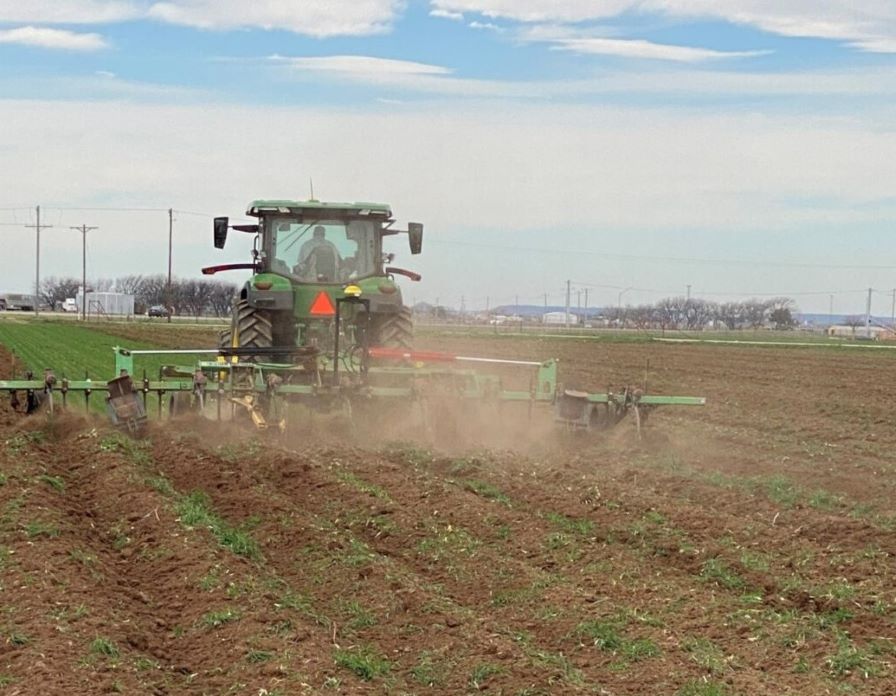Relative Prices Driving Acreage Decisions
Each year, the National Cotton Council surveys producers as to their acreage intentions for the coming year. The survey, mailed in mid-December to approximately 10,000 producers, asks growers to give their acreage for cotton and competing crops in 2008 and their intended acreage for 2009. The survey results, which were collected through mid-January, indicate that U.S. cotton producers intend to plant 8.11 million acres of cotton this spring, down 14% from 2008. Total cotton area is comprised of Upland at 7.97 million acres and ELS at 142,000.
The survey suggests that all regions intend to reduce Upland cotton planting area from last season. The West and Mid-South show the largest percentage drops of 31% and 23%, respectively. Smaller reductions of 18% and 9% are expected in the Southeast and Southwest.
Across the Southeast, Florida was the only state to indicate an increase in cotton, which appears to be coming at the expense of peanuts. Alabama reported the largest percentage reduction at 33%, followed by Virginia at 23% and Georgia at 17%. These three states’ responses showed shifts to corn and soybeans. South Carolina and North Carolina plan cutbacks of 18% and 12%, respectively, as growers shift to soybeans.
Results for the Mid-South states show declines in the 25% range, except for Tennessee’s ― down 4%. The majority of growers’ intentions are to shift acres to soybeans.
Texas growers expressed reducing area by 9% to 4.5 million acres. The other regions’ reductions of relatively more acreage imply Texas’ share of the total upland area is expanding, now at 57%, up from 54%. Only modest adjustments were shown for Kansas (up 7%) and Oklahoma (down 2%).
The Western region showed a 31% reduction. California Upland planted area intentions represented 55% losses, stemming from concerns over water availability, and some producers’ opting to grow specialty crops. Survey respondents also revealed declines in Arizona (down 7%) and New Mexico (down 40%) upland area.
Adjustments in the four states producing ELS cotton indicated mixed reviews with declines in California and New Mexico, partially offset by gains in Arizona and Texas.
Assuming average abandonment and state-level trend yields, a 12.76 million bale crop is expected, compared to 2008’s total production of 13.04 million bales.
Inputs, Weather
It is important to remember that the survey captures the intentions at the time the responses are collected. Those intentions can change between now and planting time as market conditions change. In addition to relative crop prices, growers will take into account changes in fuel and fertilizer costs, which are expected to be $50 to $100 per acre lower this year than last. Also, weather and agronomic considerations will factor into growers’ decisions.
Since the survey was conducted, the competitive landscape has changed, primarily due to weaker corn and soybean prices. USDA’s latest grain estimates, showing an increase in stock levels, highlights the pressures on demand. Currently, the ratio of crude oil at $45 per barrel to corn at $4 per bushel does not foretell profitable ethanol production. Soybean prices are also closely watching weather developments in South America. If recent rains allow their crop prospects to improve, soybean prices could remain under pressure. Movements in cotton prices relative to corn and soybeans have the greatest potential to affect acreage in the Southeast and Mid-South.
In the early months of 2009, the U.S. cotton industry is facing a host of economic challenges. The intricate linkages between the cotton market, other commodity markets and the general economy have never been more evident. Volatility has become the rule rather than the exception. While the NCC’s annual survey has proven to be an excellent barometer of the growers’ mindset, we must remember that acreage decisions will continue to be a moving target in the current environment.









